Power Play: Baseball enters a new era fueled by home runs and young stars

Baseball is on a roll. The 2016 season ended with the most watched World Series game in a quarter of a century, followed by a parade that drew the largest recorded gathering of mankind in the history of the Western Hemisphere. This year began with the biggest, most successful international baseball tournament ever.
So where does the sport go from here? Trying to piggyback on the momentum, commissioner Rob Manfred missed his window to convince the players of the need for a more consumer-friendly game (i.e., played at faster pace by reducing the growing dead time).
It’s not quite post-apocalyptic baseball, but hardly anyone is alive who knows what the immediate aftermath of a Cubs world championship is like. There is now an opportunity to make the game even more popular. And if it does happen—if this is the start to more popularity—the driving force will be the intersection of the two most dominant trends in the game today: young stars and home runs.
The game in 2017 belongs to young sluggers like never before in its history. Last year, players 25 and under hit 1,448 home runs—not only a record number but also more than any other year by a margin of 14%.
With longtime stars such as Mariano Rivera (2013), Derek Jeter ('14) and David Ortiz ('16) having retired in recent years the most important players in baseball are young. Among the most marketable players, in ascending order of age: Astros shortstop Carlos Correa, 22; Dodgers shortstop Corey Seager, 22; Indians shortstop Francisco Lindor, 23; Red Sox outfielder Mookie Betts, 24; Nationals outfielder Bryce Harper, 24; Orioles third baseman Manny Machado, 24; Mets righthander Noah Syndergaard, 24; Rockies third baseman Nolan Arenado, 25; Cubs third baseman Kris Bryant, 25; Angels outfielder Mike Trout, 25; Cubs first baseman Anthony Rizzo, 27; Dodgers lefthander Clayton Kershaw, 29; and Giants catcher Buster Posey, 30. They likely will be joined this year by Dodgers lefty Julio Urias, 20, and Twins outfielder Byron Buxton, 23, if not Yankees shortstop Gleyber Torres, 20, and Red Sox outfielder Andrew Benintendi, 22.
You will find many of these players on my All-25-and-Under team.
MLB's All-25-and-Under team
Gary Sanchez, New York Yankees - Catcher

Kris Bryant, Chicago Cubs - First Base

Rougned Odor, Texas Rangers - Second Base

Corey Seager, Los Angeles Dodgers - Shortstop
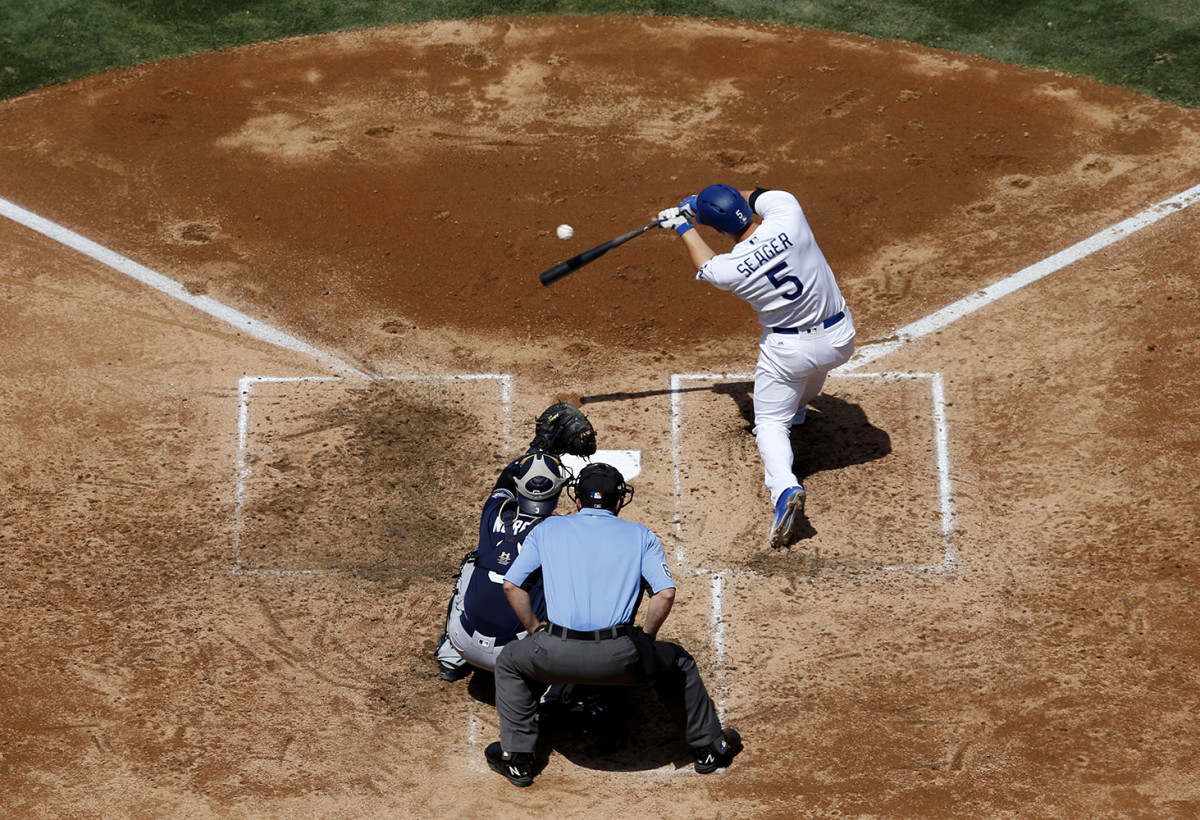
Manny Machado, Baltimore Orioles - Third Base
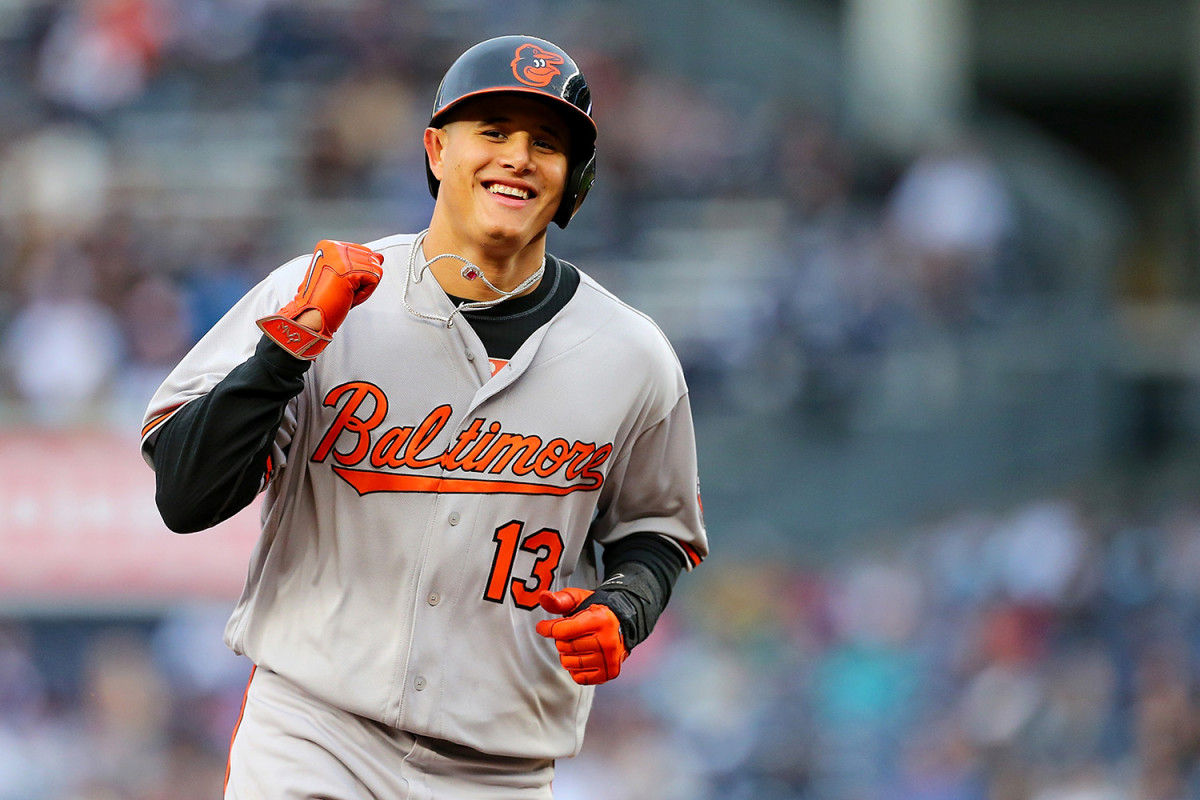
Bryce Harper, Washington Nationals - Left Field
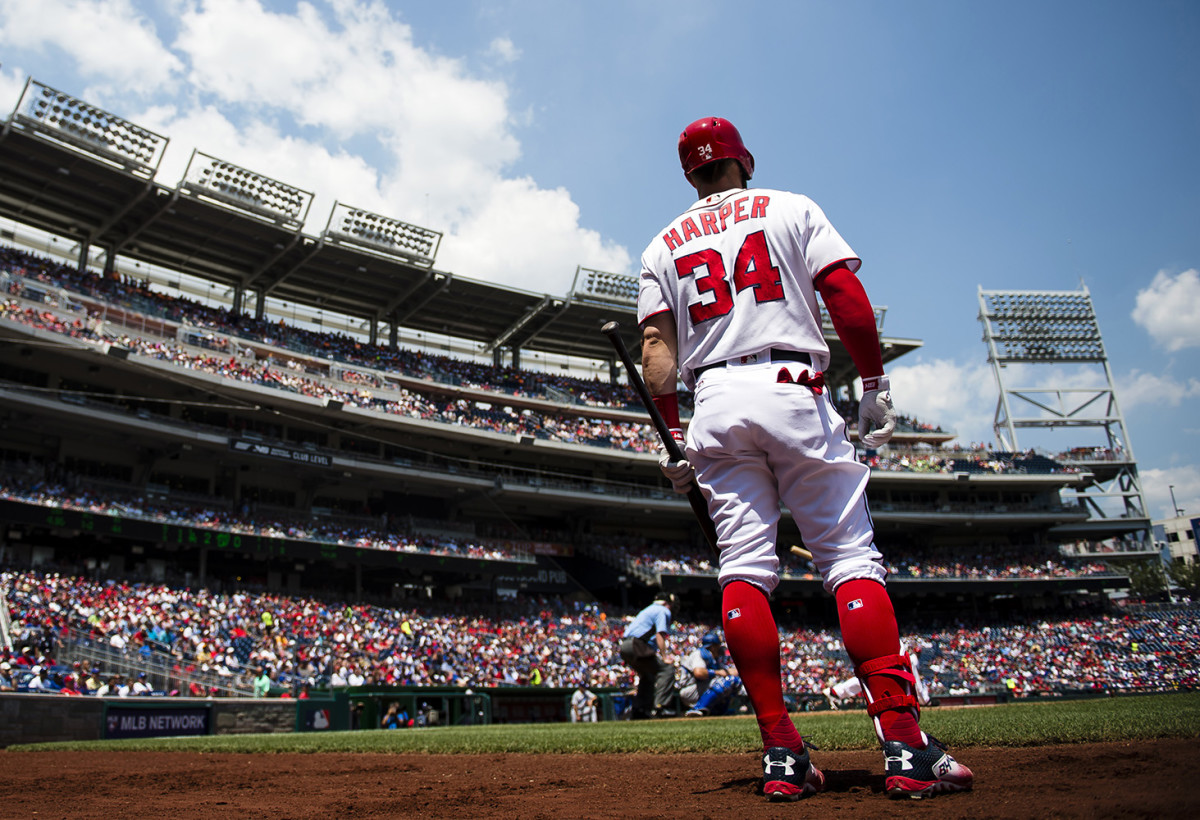
Mike Trout, Los Angeles Angels - Center Field

Mookie Betts, Boston Red Sox - Right Field

Carlos Correa, Astros - Designated Hitter
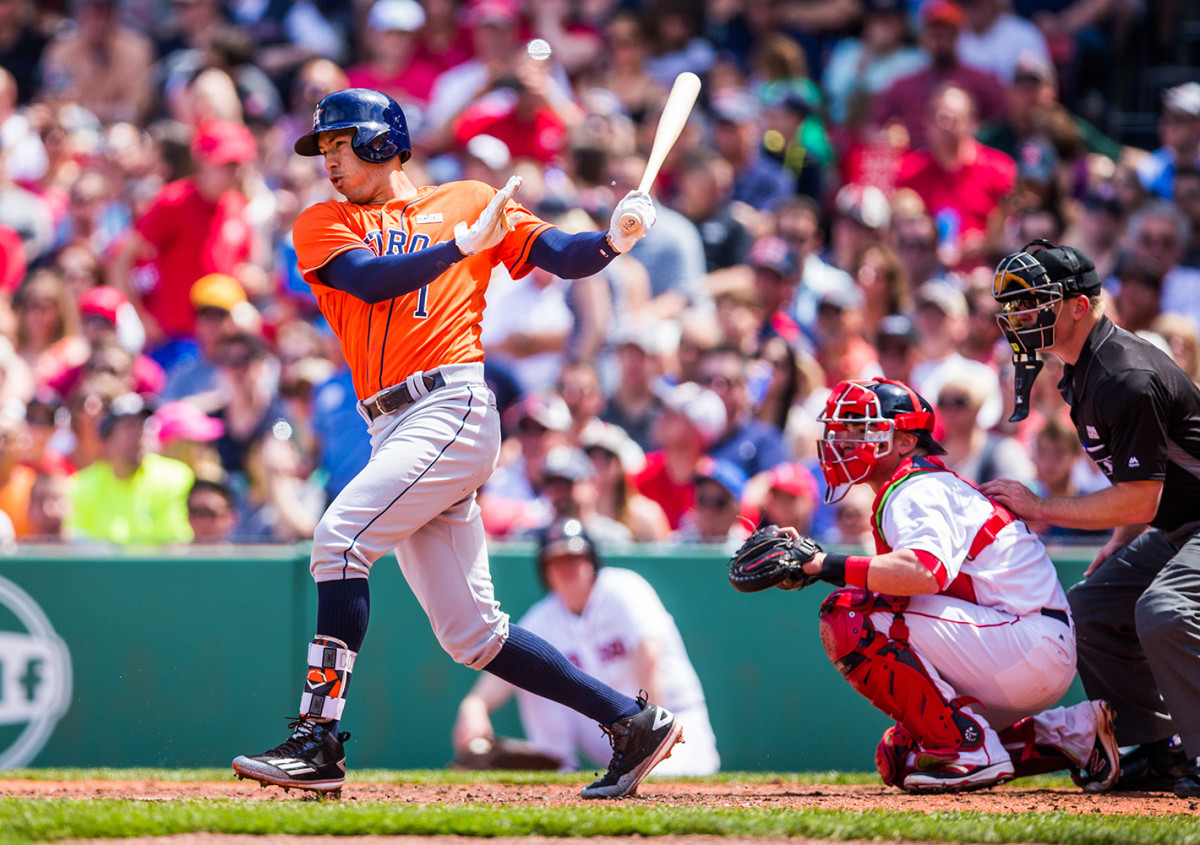
Noah Syndergaard, New York Mets - Starting Pitcher

Roberto Osuna, Toronto Blue Jays - Relief Pitcher

True, every era had its share of young stars. But we’ve never seen this many with this much power—and in a radically different game. Welcome to Launch Baseball.
Analytics first changed how we looked at baseball. Now they are changing the way baseball is played. They have devalued many of what had been among the sacred totems of the game for more than a century: RBIs, singles, wins for pitchers, the sacrifice bunt, the stolen base, intentional walks, pitchouts, batting average, contact hitters, the complete game, starting pitchers and the veteran pinch-hitter. All of them have fallen out of favor. The game that for a hundred years belonged to managers like John McGraw, Connie Mack, Gene Mauch, Billy Martin, Tommy Lasorda, Whitey Herzog and Bobby Cox no longer exists. It has been taken over by information.
Meanwhile, baseball has climbed out of its decade-long era of pitching dominance. The task-specific training methods that fueled that era have been adapted to the offensive side of the game, which is why since the second half of 2015 we have seen the most severe spike in offense ever without expansion or a change to the baseball (at least officially). The spike is built almost entirely on home runs.
Enemy Lines: MLB scouts provide insight and analysis on all 30 teams
This generation of young hitters grew up not giving a whit about batting average and without a taboo associated with strikeouts. The preferred hitting method now is to launch the ball in the air, strikeouts be damned. Baseball’s pay structure rewards such all-or-nothing style. The highest-paid player in the game, Marlins outfielder Giancarlo Stanton, is in the midst of a $325 million contract but is a lifetime .266 hitter who in seven seasons has struck out more times than Stan Musial did in 22 years. But now we can measure his awesome exit velocity. Rangers second baseman Rougned Odor, a .265 hitter who has almost five strikeouts for every walk, just signed for $49.5 million. He doesn’t get on base much, but he did hit 33 home runs last year.
Defensive shifts further discourage hitting the ball on the ground. This is the residue of Launch Baseball: Singles are more rare than they’ve ever been, and home runs are more prevalent than any season except 2000. You should expect the home-run rate to reach an all-time record this year.
This chart says it all about where we are headed. Home runs hit by players 25 and under havemore than doubled in just the past three years:
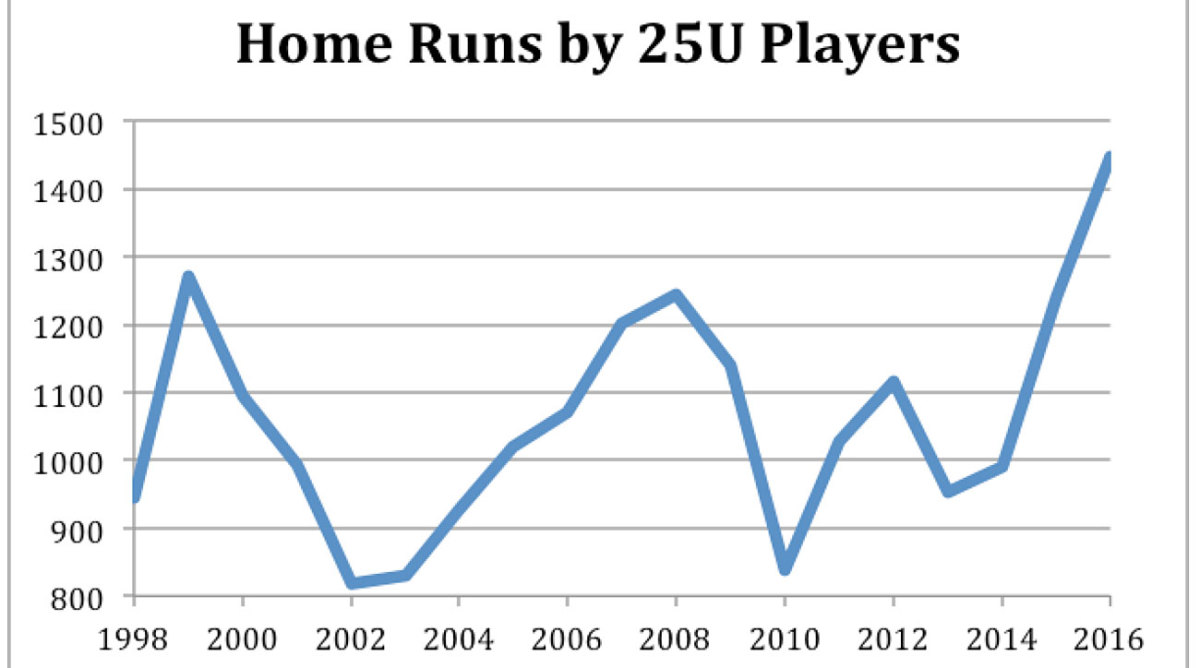
Home runs and strikeouts accounted for nearly one out of every four plate appearances last season, at 24.2%. Ten years ago it was 19.7%. Forty years ago it was 14.2%. We are watching a different game.
Almost nobody gets to the big leagues now without power. The days of the high-average contact hitter are dying. The reference to a “Punch and Judy” hitter (a reference derived from a 17th-century puppet show) means about as much to today’s players as typewriters, phone booths and rabbit-ear antennae. Last year only five players who qualified for the batting title hit five or fewer home runs: Braves outfielder Ender Inciarte, Tigers shortstop Jose Iglesias, Marlins shortstop Adeiny Hechavarria, Pirates second baseman Josh Harrison and Angels third baseman Yunel Escobar. Two years previously, there were 18 such hitters. In 1976, when downward swing planes and Astroturf encouraged ground balls, there were 40—with six fewer teams.
2017 MLB season preview: SI's experts make their awards picks
Baseball in 2017 is about young stars and home runs, and less about starting pitchers, whose workload and star power have been diminished by relief pitching. But as we saw last year, the arc of the team narrative also captivates us. We’ll never see another story like the 2016 Cubs, but as sequels go, here are the biggest possible storylines as the year begins.
1. Cubs Repeat: Only three National League teams have ever won back-to-back World Series: the 1975 and '76 Reds, the '21 and '22 Giants, and the 1907 and '08 Cubs.
2. Longest Drought Ends Again: The Indians, championship dry since 1948, are the new Cubs.
3. Longest Drought by a State Ends: No state has waited longer for a title than Texas, where the Rangers (56 years) and Astros (55 years) rank Nos. 2 and 3 on the longest franchise drought list.
4. Longest Pennant Drought Ends: Only two franchises have never been to the World Series: Seattle, which began play in 1977, and Washington, which came into existence in '69 as the Montreal Expos.
2017 MLB season preview: SI's experts make their World Series picks
Among other possibilities to be this year’s Cubs are proud franchises such as the Orioles (entering this year with a 33-year title drought, the franchise’s worst since moving to Baltimore), the Tigers (franchise-tying worst 32-year drought), the Mets (franchise-worst 30-year drought) and Dodgers (28-year drought, their worst since moving to California).
In the rain-delayed 10th inning of the seventh game of the 2016 World Series, the Cubs gave us the Casablanca of baseball finishes: a perfectly dramatic and unforgettable Hollywood ending. Phillip and Julius Epstein wrote Casablanca; 75 years later, their great nephew, Cubs president Theo Epstein, will try to write what they were smart enough never to try: a sequel. We don’t know how it will end, whether the Cubs repeat or another drought ends, or some surprise team jumps up to win the last game of this season.
We do know how we’ll get there: The game belongs to the young stars and their many home runs.
